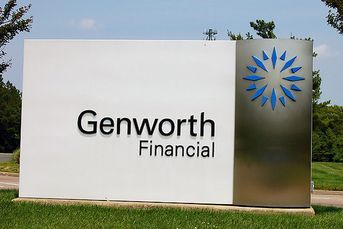Rattled investors seek safety of money markets
Seeking a safe haven from gyrating markets last week, investors cashed in some chips and placed them in…
Seeking a safe haven from gyrating markets last week, investors cashed in some chips and placed them in money market funds.
“We’re seeing so much volatility that people are stepping to the sidelines,’ said Matthew Lemieux, an analyst with the Lipper unit of ThomsonReuters.
In the week ended Aug 10, investors pulled $14.4 billion out of equity mutual funds and exchange-traded funds, according to Lipper data.
They also yanked $6.9 billion from taxable bond funds and ETFs —the largest weekly outflow from bond funds since the week of Oct. 15, 2008, according to Lipper.
High-yield bond funds suffered the biggest drawdowns, with investors pulling out $3.4 billion, or 2.8% of total assets in the sector.
Investors seem to be putting most of money into money market funds, which took in $47.5 billion for the week.
“I expect we’ll continue seeing more outflows from both equity and bond funds until this volatility decreases,” said Mr. Lemieux.
Those in need of investment income now have some difficult decisions to make, said Brian Rehling, chief fixed-income strategist at Wells Fargo Advisors LLC.
He said investors basically have two choices: take on more credit risk or more interest rate risk.
Mr. Rehling suggests a little of both.
He is recommending lower allocations to Treasury bonds and TIPS because “the yields just don’t make sense” and bigger allocations to assets such as municipal bonds, preferred securities, dividend-paying stocks and some high-yield debt — after the markets calm down.
Although the weak economy does not lend itself to loading up on credit risk, Mr. Rehling and other analysts and investment advisers think that investment-grade credits represent a good alternative for investors.
“We still think credit [risk] makes sense,” said Anne Briglia, senior fixed-income strategist at UBS Financial Services Inc. “Corporations are in very good shape.”
Indeed, U.S. companies continue to post stellar earnings despite the weak economy. They have refinanced their debt at lower rates over the past two years and are sitting on piles of cash.
Spreads have widened on both investment-grade and high-yield debt in the past couple of weeks, in part because of selling by institutional investors, said Dan Genter, chief executive of RNC Capital Management LLC.
He attributes the selling to requirements that institutional portfolios maintain a high average credit rating.
“It’s creating a lot of opportunities in lower-grade corporations,” said Mr. Genter, who manages money for institutions and high-net-worth individuals.
Like Mr. Rehling, he thinks that munis also are a good fixed-income option, particularly for investors in high tax brackets. With nominal yields on munis now higher than Treasuries, the tax advantages look all the more attractive.
Mr. Genter suggested that 15-year munis can give investors 85% of the 30-year yield.”Unless people think that interest rates are going down from here, I see no reason to go out to 30 years,” he said.
John Donaldson, director of fixed-income investments at Haverford Investments, also is willing to take on some longer maturity risk for additional yield.
He favors callable muni bonds that can offer 50 to 75 basis points more in yield for the same or better credit risk. The potential downside is that if interest rates drop further, investors would have to invest in a lower-rate environment if the bonds were called.
Mr. Donaldson cautioned that investors be wary of muni issues secured by grants or revenue-sharing arrangements with the federal government. “Who knows what their revenue will look like 10 years down the road?” he asked.
Preferred securities offer another source of income, with many yielding in the neighborhood of 7%. But the downside is that they are just one step above common stocks in the capital structure, and if times get tough for financial companies, which issue about 80% of preferred securities, dividends may get cut.
Mr. Rehling suggests that advisers steer clients away from individual preferred issues to funds where “someone is watching over” the mix.
Whatever decision they make to seek returns, investors may be taking on risk for quite some time.
“We’re going to be stuck in this low-interest-rate environment for a while,” said S.J. Guzzo, senior vice president of fixed-income strategy at Raymond James Financial Inc.
Learn more about reprints and licensing for this article.




